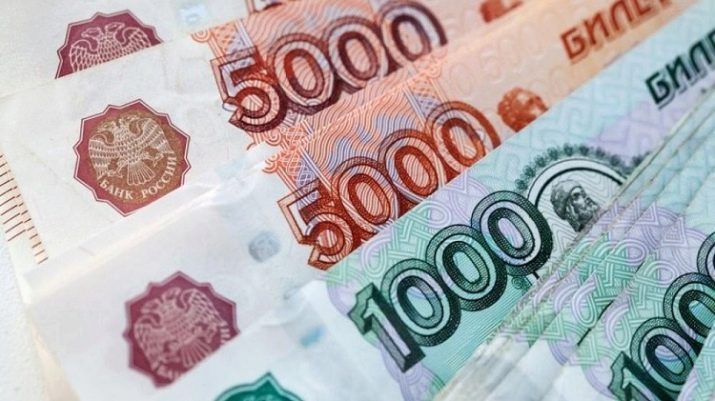How to become a tattoo artist?
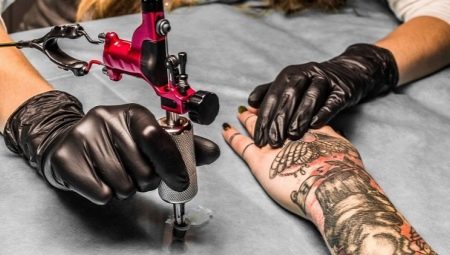
Recently, the profession of a tattoo artist is gaining more and more popularity. Before choosing this specialty as the main one, you need to familiarize yourself with the existing features and nuances of the tattoo artist's work.
Profession training
To become a professional tattoo artist, you do not need to get a higher medical education, take any narrow-profile subjects - you just need to finish high school and enroll in specialized courses.
It is important to choose the right educational program, at the end of which a beginner master will be able to receive not only a certificate, but also the necessary knowledge that is applicable in practice.


You can learn a popular profession at home, but for this you will need to purchase equipment and numerous consumables, without which the practice is meaningless. You need to understand that a tattoo artist is not an easy job, while professionals learn and improve their own skills throughout their lives. Although it is difficult, you can learn how to get tattoos by being able to draw.
At the moment, in Russia there is a fairly wide variety of specialized courses from leading tattoo artists. It is recommended to give preference to those programs where the main emphasis is on practice, and not on obtaining purely theoretical knowledge. In Moscow, the most popular are Tattoo Academy and K. T. Tattoos, in St. Petersburg - Taurus and Tattoo studio 812 at Dostoevsky, 36.
In addition to specialized knowledge, it is advisable to know artistic graphics, the rules for constructing drawings and much more. Whether the student is a boy or a girl, effective study is always about following directions carefully and working hard. Contrary to popular belief, anyone who studied in art circles, drew for themselves in childhood, or just took a course can cope with it.
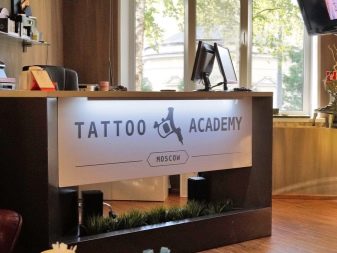
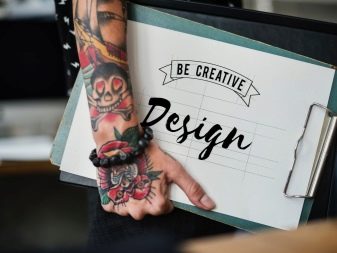
Where to begin?
The first thing to start with your training is to familiarize yourself with the basic requirements and responsibilities of the profession. Without this, further actions concerning theory or practice are useless. A qualified craftsman must:
- get to know and communicate with clients for a better understanding of a person's character and lifestyle;
- keep the workshop clean and properly sterilize the instruments used;
- correctly administer pain medications;
- apply the outline of the main pattern, own specialized equipment.
The presence of aesthetic and artistic taste is a prerequisite for a competent and highly paid master... It is recommended to improve qualifications from scratch by studying theory with its simultaneous testing in practice. This work consists of thorough and careful honing of drawing and sketching skills. It is especially important to always be neat, even on a regular sheet of paper.
After a certain number of sketches have been drawn, a portfolio should be compiled from the most attractive and beautiful works. Projects are made out both in a regular notebook and in the program. To increase your chances of getting a job, you can create a small business card website describing the main services and competencies. The skill of tattooing is not only about applied skills - one should also try to develop the psychological component of the profession.
A professional worker should know how to approach a particular person, explaining to him that drawing on the skin is forever.
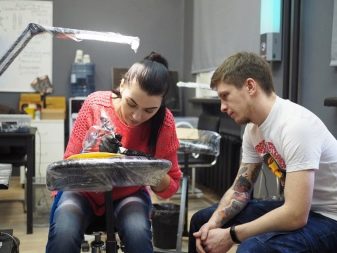
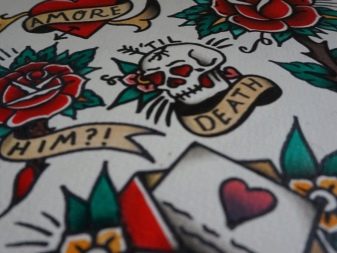
Creating a drawing
The graphic pattern on the body acts as identification and self-expression. Due to this feature, the process of creating a pattern and texture must be treated with utmost responsibility. This stage is one of the most important factors - in fact, it is he who determines the further vector of development. The beginning of any tattoo, regardless of shape or shade, is a preliminary sketch. Some professional craftsmen apply a pattern to the skin without tracing, which is called the freehand technique.
Sketching is an arduous process, which takes into account not only the graphic skills of the tattoo artist, but also his understanding of the structure of another person's skin or any other body features that affect the tattoo application. The contours of the future pattern are always applied with a special marker, which is not capable of causing irritation or allergic reactions.
The most popular images applied to the body:
- motivating phrases;
- inscriptions in Latin and other languages;
- images of favorite animals or heroes of games, films, books;
- names or images of loved ones, loved ones.
The above tattoos are found in 80% of cases.
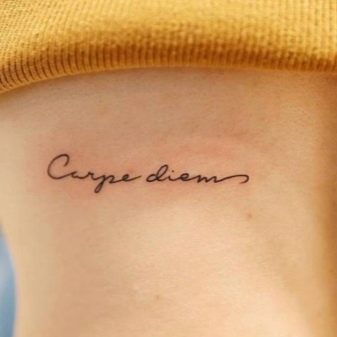

After the main drawing has been determined, the master must first mark the place on the body... For this, beginners can use specialized stencils that take into account the height, width or length of the future drawing. The size of the tattoo is a particularly important indicator, without which any pattern applied can significantly differ from the desired result. It is also necessary to take into account the skin structure, drops and other factors. An illiterate or inexperienced master is able to apply a tattoo where it will be too distorted.
A competent master always clarifies with the client certain nuances related to the general sketch. For example, in the case of drawing a tiger, a professional employee will ask the person a number of similar questions:
- the color and size of the animal;
- fur detailing;
- the number of additional elements.
A sketch always begins with a rough version of a simple pencil, after which the drawing is transferred to human skin with prior agreement with the client... Novice craftsmen can use ready-made stencils printed on a printer, or use in their practice such a specialized device as a lightbox. The most technologically equipped and modern tattoo parlors use automated software in their work.
The wizard is able to make a sketch on a tablet or computer, while the client himself can quickly make edits and explain his own wishes for the work.

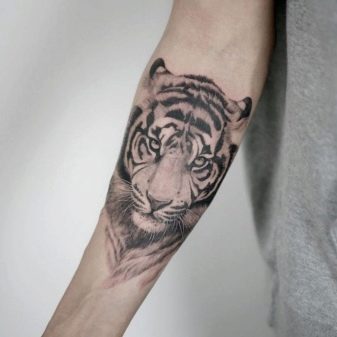
Tools and materials
Materials and tools are the backbone of the work of any tattoo artist. With their help, he applies a pattern to the skin, disinfects the room and does much more. In addition to the tattoo machine, the starter kit includes the following.
- Handpieces... Specialized elements that allow the needle to move. They are purchased based on the shape and design features of the machine. They can be both reusable and disposable.
- Needles... Manufacturers produce needles of different lengths and materials. For a beginner, it is recommended to use a short or medium taper. Longer models are aimed at professional insertion of the needle under the skin. Recently, modular needles are gaining popularity.
- Sealing elements and rubber bands. With their help, the master is able to quickly fix the course of the used needle, as well as reduce its vibrations or vibrations. This element can significantly increase the comfort and accuracy of the pattern.
- Power Supply... A device with which the mains voltage is converted into a final current with specified properties. The main types of this equipment are transformer, pulse and stationary. The most convenient solution is a power supply unit with a mechanized pedal, thanks to which the master is able to operate the machine without hands.
- Clip cords. They are connecting cables that supply voltage to the machine mechanism. Always selected based on diameter, capacity, or equipment termination.
- Pigments... Colorant or ink. The quality of this material is directly proportional to the result.
- Marker for tattoos. Sterile, disposable and hypoallergenic element used for incomplete transfer of the pattern to the skin or adding new design elements.
- The list also needs to be supplemented with professional and high-quality disinfectants.... This includes aseptic preparations, gloves, liquid soap and any other materials needed to clean the premises, equipment and human skin.
- In addition to the materials described above, the master also needs the presence of a good lamp, a device for pre-sterilization, a chair with height adjustment, additional shelves and cabinets for instruments. Depending on the conditions and type of work, the list may increase or decrease.
As for the primary equipment, a novice master should take a closer look at special tattoo kits. In this case, the practice is performed with a copy of the original instruments on artificial leather. With their help, you can quickly get an understanding of the specifics of the work, avoid financial costs and save a significant amount of time when choosing professional equipment.



Client search
Finding clients is just as important a process as choosing tools or teaching theory. With the right marketing organization, you can quickly build up regular salon users. Earnings directly depend on this indicator. The main sources of attracting a client base.
- Blog... An excellent version of an advertising campaign, with the help of which the wizard shows his own work to potential clients, talks about certain nuances, and also attracts an additional audience due to sincerity.
- Personal site. Usually, business card sites are created, with whose help you can quickly find out information about the master: location, professional qualities, availability of diplomas, a list of services provided.
- Social networks... Analogous to a blog, with the exception that many social networks communicate with customers directly. In addition to the usual Instagram or VK, you can create a personal profile on the YouTube site, where the master can upload his own sketches, teach other people and at the same time advertise his services.
- Cards... In this case, an ad is created on Google or Yandex maps tied to the location of the tattoo parlor. This method allows you to attract additional customers.
In addition to the above methods, outdoor advertising shows high efficiency, which includes the creation of brochures, signs, business cards and other marketing gimmicks. A beginner wizard can also connect a newsletter on social networks or e-mail.
In the absence of the opportunity to invest any finance in the promotion of a personal brand, you can use specialized aggregators or specialized free forums on a given topic. As they attract customers, people will begin to recommend the master to friends or colleagues.


Features of tattooing
Before starting a business or going to work in a salon, a novice master needs to learn about the existing features and nuances of tattooing. After sterilizing the instrumentation and preparing the sketch, you will need to do the following.
- Remove hair from the skin with a razor. Additionally, wipe the area with an antiseptic.
- Apply a special composition to the skin to transfer the sketch.
- Attach the prepared pattern to the skin, then press gently. After 10-15 seconds, the sketch must be removed and checked for contours on the skin. Additionally, you can use a marker.
- Contour the drawing. Pre-lubricate the skin with petroleum jelly.
- When applying a tattoo, the black areas are always painted over first, and only then the colored areas.
The stages described above depend on the instrumentation, the characteristics of the client's skin and many other factors. After the work has been completed, the master applies a remedy for wound healing and disinfection.
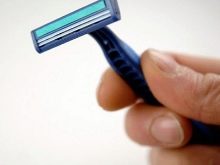

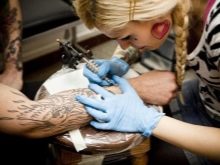
How much does a tattoo artist earn?
A tattoo artist's salary depends entirely on his skills, abilities, the quality of the tools used and a number of other factors. Based on statistical data, a beginner tattoo artist earns on average about 50-60 thousand rubles a month. Similar numbers are applicable for large cities like St. Petersburg or Moscow. In other areas, earnings vary in the range of 25-40 thousand rubles. Professional masters are able to earn more than 100 thousand rubles, but such indicators are typical for highly competent, experienced and talented tattoo artists.
